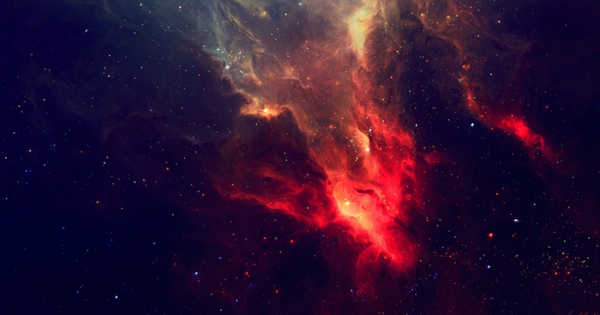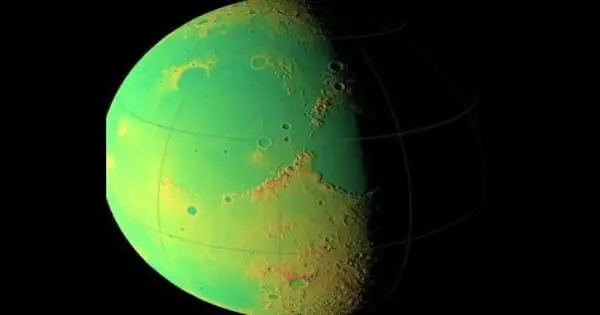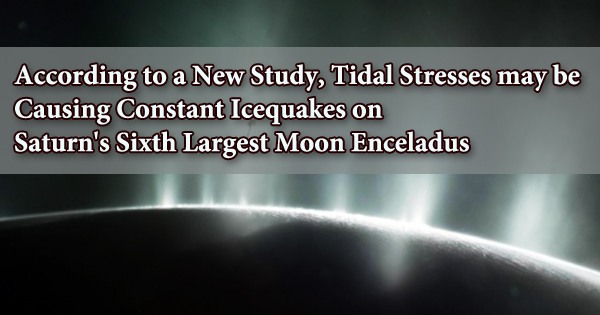Astronomers have observed two stars spiraling to their demise after spotting the tell-tale signs of a teardrop-shaped star. The tragic shape is the result of a massive nearby white dwarf distorting the star with its intense gravity, which will also serve as the catalyst for an eventual supernova that will consume both. It is one of only a very small number of star systems discovered by an international team of astronomers and astrophysicists led by the University of Warwick that will one day see a white dwarf star reignite its core.
According to new research published in Nature Astronomy, the two stars are in the early stages of a spiral that will most likely end in a Type Ia supernova, which helps astronomers determine how fast the universe is expanding.
This study was supported by the Deutsche Forschungsgemeinschaft (DFG, German Research Foundation) and the Science and Technology Facilities Council, both of which are part of UK Research and Innovation.
HD265435 is approximately 1,500 light-years away and consists of a hot subdwarf star and a white dwarf star that orbit each other at a rate of around 100 minutes. White dwarfs are ‘dead’ stars that have used up all of their fuel and collapsed in on themselves, resulting in a small but extremely dense object.
Astronomers have made the rare sighting of two stars spiraling to their doom by spotting the tell-tale signs of a teardrop-shaped star.
A type Ia supernova is thought to occur when the core of a white dwarf star re-ignites, resulting in a thermonuclear explosion. This could happen in one of two ways. In the first, the white dwarf gains enough mass to reach the Chandrasekhar limit, which is 1.4 times the mass of our Sun. HD265435 corresponds to the second scenario, in which the total mass of a close stellar system of multiple stars is close to or exceeds this limit. Only a few other star systems have been discovered that will cross this threshold and explode as a Type Ia supernova.
“We don’t know exactly how these supernovae explode, but we know it has to happen because we see it happening elsewhere in the universe,” says lead author Dr. Ingrid Pelisoli of the University of Warwick’s Department of Physics, who was previously affiliated with the University of Potsdam.
“One possibility is that as the white dwarf absorbs enough mass from the hot subdwarf, the matter will begin to escape from the hot subdwarf and fall onto the white dwarf as the two of them orbit each other and get closer. Another possibility is that as they lose energy due to gravitational wave emissions, they will get closer until they merge. The white dwarf will go supernova once it has gained enough mass through either method.”

The team was able to observe the hot subdwarf using data from NASA’s Transiting Exoplanet Survey Satellite (TESS), but not the white dwarf, because the hot subdwarf is much brighter. However, the brightness of the star varies over time, implying that it is being distorted into a teardrop shape by a nearby massive object. Using the radial velocity and rotational velocity measurements from the Palomar Observatory and the W. M. Keck Observatory, as well as modeling the massive object’s effect on the hot subdwarf, the astronomers were able to confirm that the hidden white dwarf is as massive as our Sun but only slightly smaller in radius than the Earth.
Both stars have the mass required to cause a Type Ia supernova when combined with the mass of the hot subdwarf, which is slightly more than 0.6 times the mass of our Sun. The white dwarf will inevitably go supernova in around 70 million years because the two stars are already close enough to begin spiraling closer together. Theoretical models developed specifically for this study predict that the hot subdwarf star will also contract to become a white dwarf star before merging with its companion.
As ‘standard candles,’ type Ia supernovae are important in cosmology. Their brightness is constant and of a specific type of light, so astronomers can compare what luminosity they should be with what we see on Earth and use that to calculate how far away they are with a high degree of accuracy. Astronomers calculate the expansion of the universe by observing supernovae in distant galaxies and combining what they know about how fast this galaxy is moving with our distance from the supernova.
Dr. Pelisoli continues: “The more we learn about supernovae, the better we will be able to calibrate our standard candles. This is critical right now because there is a discrepancy between what we get from this type of standard candle and what we get from other methods.”
“The more we learn about how supernovae form, the better we’ll be able to determine whether the discrepancy we’re seeing is due to new physics that we’re not aware of and aren’t accounting for, or simply because we’re underestimating the uncertainties in those distances.”
“Another disparity exists between the estimated and observed rate of galactic supernovae, as well as the number of progenitors observed. We can predict how many supernovae will occur in our galaxy by observing many galaxies or using what we know about stellar evolution, and this number is consistent. However, if we look for objects that have the potential to become supernovae, we won’t find many. This discovery was extremely useful in estimating how much a hot subdwarf and white dwarf binary can contribute. It still doesn’t appear to be much; none of the channels we observed appear to be sufficient.”
















